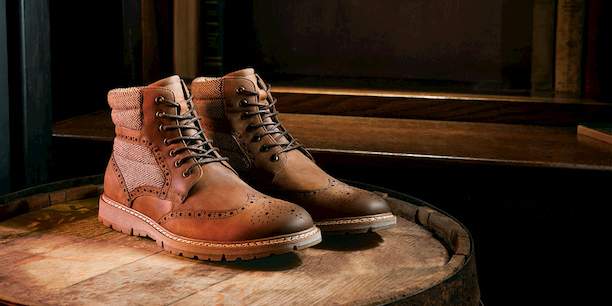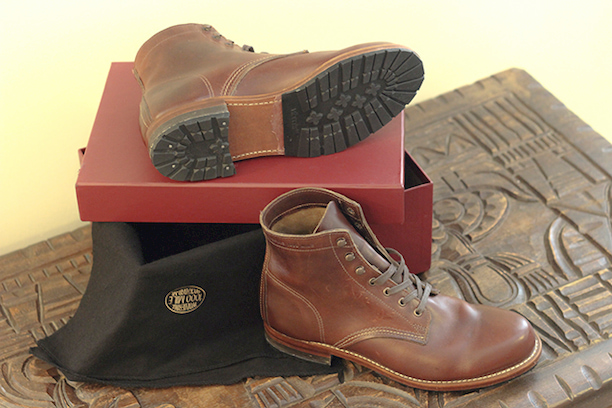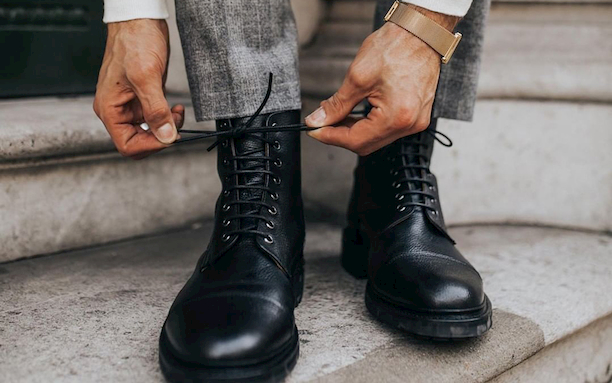History of Men’s Boots and How to Pick the Ideal Pair
Wearing stylish boots can drastically increase your chances with the ladies. And while most women think that casual boots are the best choice for men on the first date, it doesn’t mean that you should throw any pair of boots and instantly make women fall in love with you. If only it was that easy…
The tricky part of wearing boots is knowing what to combine them with, and when and where they’re appropriate to wear. So, relax and take notes. After you’re done reading this, you’ll not only know how to buy quality and stylish men’s boots, but you’ll also know the history behind men’s boots, which can be a great conversation to have on a first date should the topic of boots or shoes in general come up.
History of Boots

The first traces of men wearing boots is about 15.000 years ago on a cave wall painting, where men are noticed wearing boots of skin. As impressive as that is, today’s boots are far different from those worn by our ancestors. During the 16th Century, men wore thigh-high brown leather boots that eventually evolved into the 17th century cavalier boots. Cavalier boots are considered the first military boots and were worn by soldiers. Their purpose slowly evolved when riding horses became a popular pass-time activity for the higher class in the 18th Century. As a result, boots became softer and closer fitting designed for horse riding. By the 19th Century, men’s boots evolved in terms of design and shape, and in 1817 the Wellington boot became one of the most popular men’s footwear.
It was also around that time when the Blucher style boot came about, and would become the foundation of today’s boots. These boots featured laces, and they serve as the basis for modern sneakers, hiking boots and military boots. But it wasn’t until the later half of the 19th Century that boots became more comfortable and practical. With the implementation of technological advances like vulcanised rubber and sewing machines, men’s boots manufacturing became revolutionised.
Features of Good Quality Boots
When you’re looking to buy men’s boots, there are four important features to pay attention to: the sole, the materials and style.
Soles
The sole of the boots is as important as the materials it’s made from. It’s the part that takes the most abuse on a daily basis. Usually, materials like rubber or leather are used to make the sole, and it’s up to you which material you prefer. Both materials come with distinct advantages and disadvantages.

Leather soles adapt to your feet and the way you walk, provide a lot of breathability for your feet, look more elegant and classy, and they’re easier to resole. Furthermore, leather is a more sustainable material and lasts longer. On the downside, leather can be slippery, especially if the soles are smooth. However, some leather soles are butyl treated to improve grip and add stickiness. Additionally, leather soles may not provide sufficient waterproofness between the ground and your feat. And lastly, leather soles may not provide as much cushioning, simply because it’s a natural material that isn’t too thick.
Synthetic soles, such as rubber, comes in a greater range of qualities, and rubber sole boots are usually more lightweight and breathable. Since rubber is easier to produce, rubber soled boots are also more affordable. Unlike some types of leather, rubber soles can be washed and wiped without damaging them. But since it’s a man-made material that’s cheaper, it also comes with disadvantages. Lower quality rubber wears much faster, and looks cheaper, which can hurt you in the style points department.
Materials
As with any piece of clothing, boots can be made of a wide range of materials. The higher the quality of the materials, the more expensive the boots will be. A common misconception with leather is people thinking that genuine leather is a high-quality material, when in fact it’s the lowest leather quality. That being said, look for top-grain or full-grain leather boots.

So, unless you have to, never get synthetic or genuine leather. Top-grain and full-leather are much tougher and will last for longer as long as you take proper care of it. Taking good care of leather entails cleaning it, polishing and conditioning it every week or two. Leather is skin, so treat it like such. Uncared for and unmoisturised skin wrinkles and cracks, and so do leather boots.
Style
Last but not least, no matter what materials the boot is made of, if it’s lacking in style, it won’t impress anyone. Avoid fad styles and stick to the classics like Wellingtons, Chelsea boots or Military lace-ups. These styles can be worn casually and formally, and they look just as stylish as they did over a century ago.

The boots you buy should be wearable all year round, otherwise you’re spending money that you won’t get much value for. That being said, some of the things you should avoid when buying men’s boots are fur-lined boots, as those will be too hot to wear in the summer, and boots made of suede materials, as those won’t perform as well in cold and wet weather.



